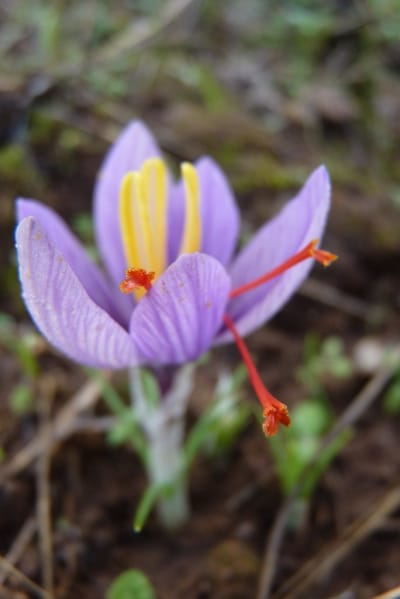100 hectares of Yazd lands were allocated for saffron cultivation
Akbar Sheikh Alishahi stated: Due to the low water demand of this plant and its high added value, in the current crop year, the area under cultivation will reach 935 hectares and the amount of production will reach three tons.
He stated that in each hectare of saffron farms, 25 people are directly employed, he specified: The saffron produced in Yazd is of high quality due to the weather conditions and suitable soil and is the sixth producer of this plant in the country.
The senior official of the horticulture department of Yazd province reminded: Saffron is one of the less water-loving plants with a seven-year yield, and in order to regain its yield, the onion must be transplanted after seven years.
He continued: Last year, 2.5 tons of dry product from 835 hectares of cultivated lands of this water-scarce plant was produced in the province and offered to domestic and foreign markets.
Sheikh Alishahi, stating that the average dry crop production per hectare of land in the province is five kilograms, added: The highest area of saffron cultivation with 400 hectares in Bahabad city and the lowest with 6 hectares belongs to Yazd city.
He added: Yazd is one of the provinces that has faced the problem of water shortage and dehydration in the last 2 decades, however, an important part of the province is dedicated to planting various agricultural products.
The director of horticulture of Yazd Jihad Agricultural Organization stated: Abarkooh has suitable climatic conditions for saffron production and in this city, about 100 hectares are allocated for planting this crop by farmers.
He emphasized: the income of the people of some areas of the province, including Abarkooh, Khatam and Bahabad, is provided through agriculture, so changing the pattern of planting crops, developing saffron and medicinal plants is recommended to farmers.
The arable land of the province is 170,000 hectares, which is currently cultivated 114,000 hectares due to the continuation of two decades of drought and reduced rainfall, of which 69% is related to gardens and 31% is related to arable land.
Despite the continuation of 2 decades of drought and water shortage, 1,724,000 tons of various agricultural products are produced in the province using modern irrigation methods.
The number of exploiters in the agricultural sector of Yazd is about 70,000.
87% of the population of 1.2 million people in Yazd province live in 21 cities and the rest in villages.







Get Social